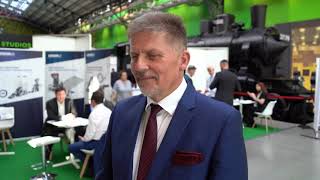Capital costs have been coming down as production technology has been optimized. WinWinD uses vacuum assisted resin transfer moulding (VARIM); prepreg is the growing alternative. Production stages include material preparation like glass cutting, resin mixing and foam preparation; prefabrication of the structural supports like the spar cap and root insert; moulding; wet and dry finishing; then assembly with metal parts and lightning connections. The company has in house testing facilities and works to GL, DNV and CWET (India) standards.
Structural design optimisation of blades is being studied by ACENTISS, which is working with Airworks of Italy and IABG to form A2Wind to focus on rotor blade development using aerospace technology. The structural constraints of blades include a minimum stiffness to avoid collisions with the turbine tower, and a minimum buckling factor. There are manufacturing constraints too and cost is a big factor. Studies showed that carbon fibre will be needed for structural and cost optimisation as blades get longer.

In blade design there are limits due to aerodynamic stress, rotational stress, mass-dependent stress and frequency. The SGL Group both manufactures wind turbine blades and supplies carbon fibre: it has studied the use of carbon fibre in the spar cap load-carrying structure of rotor blades, compared to glass fibre. The carbon fibre blades were 20% lighter and had about 25% lower mass moment. In addition, the use of carbon fibre had a big effect on lower blade root fatigue loads, which means that the root and pitch system can be smaller, with a longer blade.
The trend towards carbon fibres requires new expertise as they are finer than glass and more difficult to infuse with resin. BASF supplies epoxy to the wind blade market and Dr Gregor Daun has conducted research to improve infusion for big blades. With geometric scale up of structures, most forces are squared and torques are cubed, so laminate thickness needs to increase. Over long flow paths infusion fronts slow down and become more viscous, so BASF has a new latent system with slower gelation. This can assist with the thicker parts too as it improves homogeneity of curing.
Euros Entwicklungsgesellschaft was founded in 1996 in Berlin to focus on blade design and has since started two plants in Poland at Ustron and Zory-Warszowice for blade and master plug/mould manufacturing.
It supplies around 1% of the European market. The Materials Department is carrying out research on foam cores for spar webs and the shell, looking at resin absorption into the slits in the sandwich and the cellular structure, which depends on the cell diameter and wall thickness. The shear stiffness after resin absorption increases by a factor of approximately 3.2, which can be taken into account in the design process and used to reduce blade weight.


